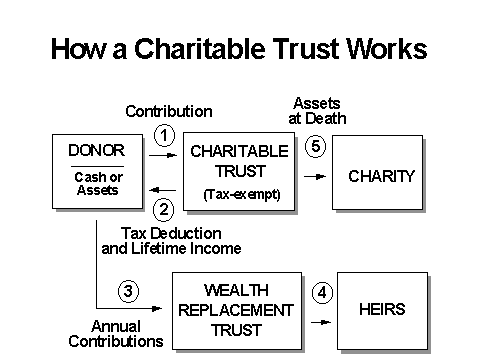Generation X and Planned Giving
The Case for the Generation-X’ers
“Planned giving is not an option for young accumulators.” Have you heard that? Don’t believe that all young people are mostly concerned with acquiring the newest and latest gadgets to the exclusion of something they strongly believe in and are willing to financially support. Case in point, Jennifer (30) and Jason (30) Williams are a proactive couple with a new child. Married less than 5 years, both are professionally employed with well-paying jobs providing competitive benefits packages. Besides their home and vehicles, they have already topped out in their retirement plan contributions and own a small parcel of investment property for which they paid just $7,500 a few years ago. Now they find that their suburban community is encroaching on their undeveloped land, and the fair market value has risen accordingly. Even with the reduction in federal capital gains rates, they are unwilling to sell the land and lose control of a significant part of the sale proceeds. These losses include federal, state and city income taxes, and so they researched the use of an IRC §664 Trust to shelter the capital gains inherent in the sale of their property. Already supporting their local church, Jennifer feels like they are charitably inclined, although they both profess to be averse to unnecessary taxes and are concerned about future income security.

Jennifer was initially supportive of assets eventually going to their church, but was reluctant to contribute 100% of their real estate to an irrevocable trust, citing college funding concerns for their daughter, Jamie. Jason, on the other hand, argued that the tax savings would offset costs, and they could afford additional savings for future college expenses. Their financial advisor suggested a CRUT be set up as a “spigot trust” or NIMCRUT allowing them some latitude in distributing income when they need it for college and retirement expenses down the road. It was also suggested to compromise and only contribute 6 of the 71/2 acres to the CRT, retaining a portion outside the trust to be sold in a recombined unit to the new buyer. In this way, the Williams get their “seed money” back to reinvest in other property, and the tax deduction generated by the contribution of the remaining acreage to their CRT would offset this taxable sale.
| Partial Sale – Partial CRT Gift of Real Estate | Sell 100% of Land Outright | Sell Land 20% Taxably and CRT 80% |
| Sale proceeds |
$125,000 |
$25,000 outside CRT, $100,000 inside |
| Net sale after taxes and expenses |
$90,938 |
$118,438 |
| Spendable income stream from 10% fund (earning 3% OI/7% CG – paid out at 5% annually) in after-tax investments over Jennifer’s life expectancy |
$1,075,244 |
$218,005 |
| Tax savings from $14,407 deduction in a one-life $100,000 NIMCRUT in 31% marginal bracket |
$0 |
$4,466 |
| Spendable income from $100k CRT deferred until 60 years of age at 10% earnings over Jennifer’s life |
$0 |
$2,279,066 |
| Amount left to family charity from CRT |
$0 |
$3,992,346 |
| Estate left to heirs after taxes from just this asset |
$757,194 |
$153,520 |
The only stumbling block to this scenario was the recently enacted TRA 1997 – Section 1089 which now mandates a 10% remainder interest inside a CRT. Prior to July 28, 1997, a 5% CRUT for Jennifer and Jason’s joint lives would have been easily done. Now, they are prevented from using such planning tools because of their age and the inability to take a low enough income payout to qualify their charitable trust under the new law. Although they could have opted for a qualifying term of years trust, the maximum allowed is only 20 years and that did not meet their needs for an income stream as they approached retirement. What eventually worked was a one-life NIMCRUT based on just Jennifer’s life expectancy. The rationale was that as the slightly younger and female spouse, she would probably outlive Jason and the income stream would be effectively available for both their lives. To protect Jason’s future income interest in his wife’s trust, which would terminate with her premature death, he chose to insure her life to at least make sure that he wouldn’t give up all potential income from the jointly contributed property. Since they needed insurance on Jennifer’s life anyway to address survivor income for their child, they felt like this compromise solved the problems as well as could be expected under the new law and still provided for their security In the final analysis, they were able to increase spendable income, reduce unnecessary taxes and pass more total assets to heirs in ways that met their financial planning needs for both security and control. Have a similar case? Call us.